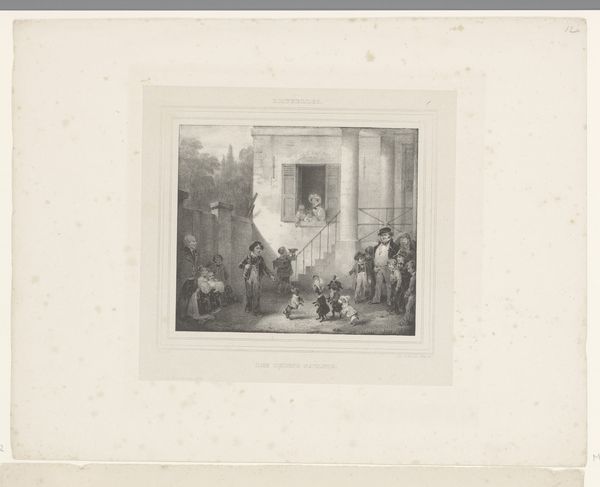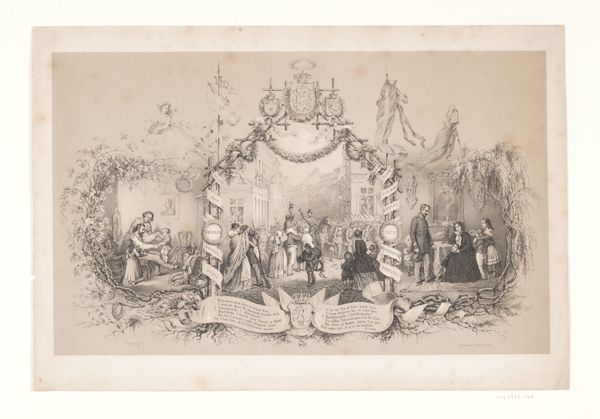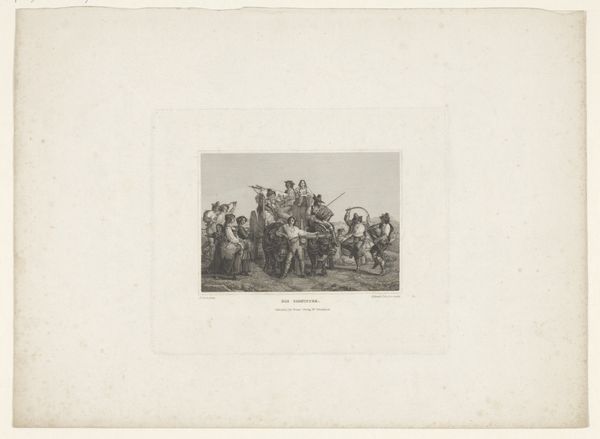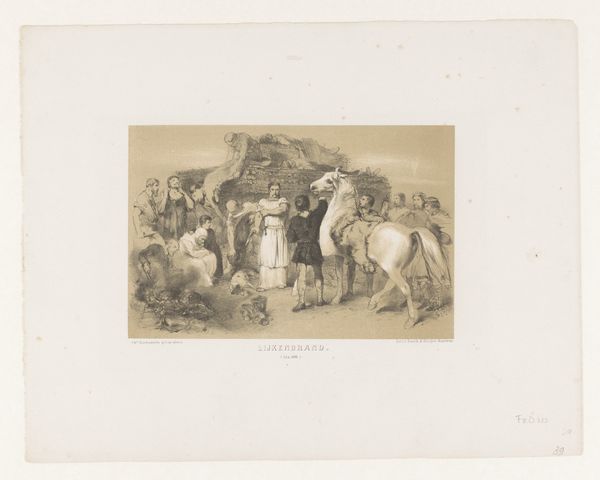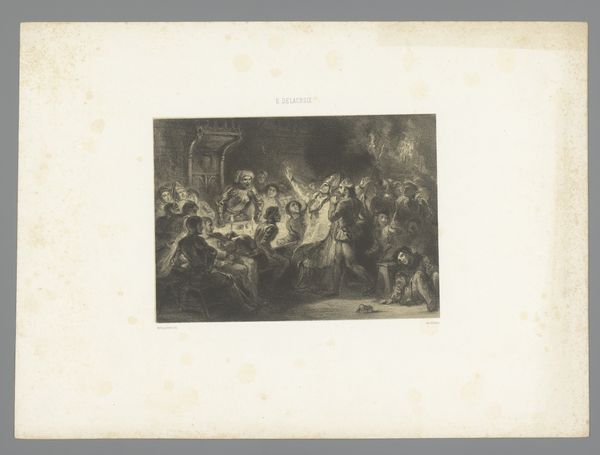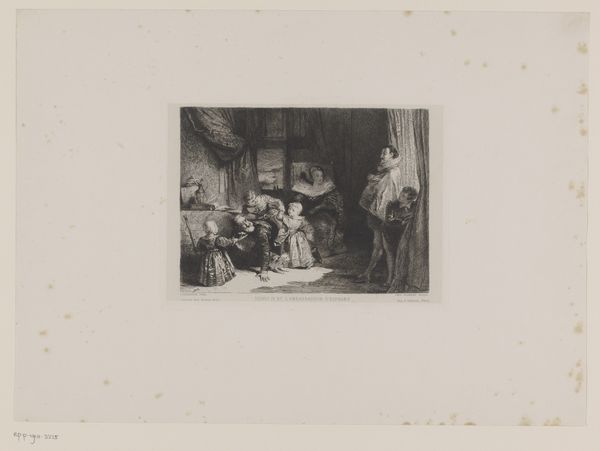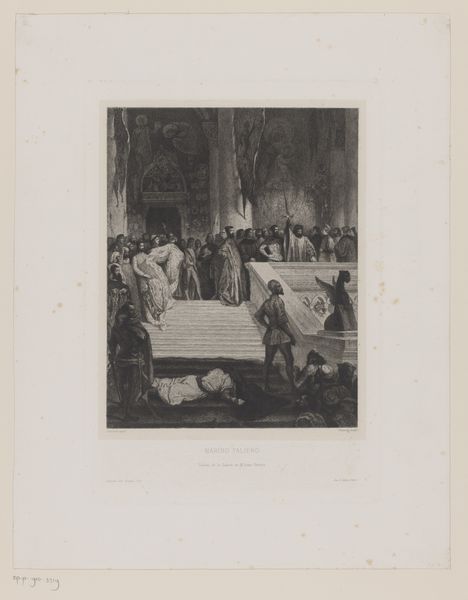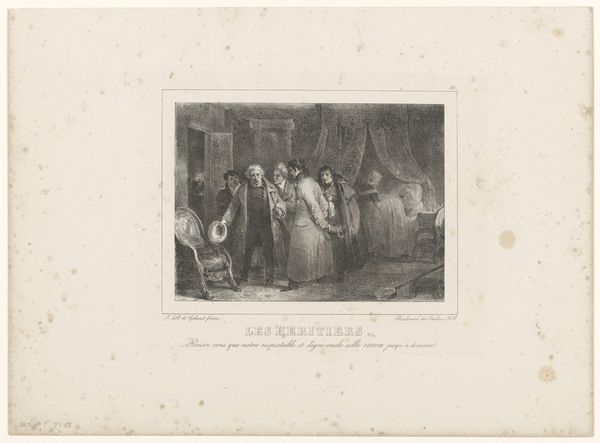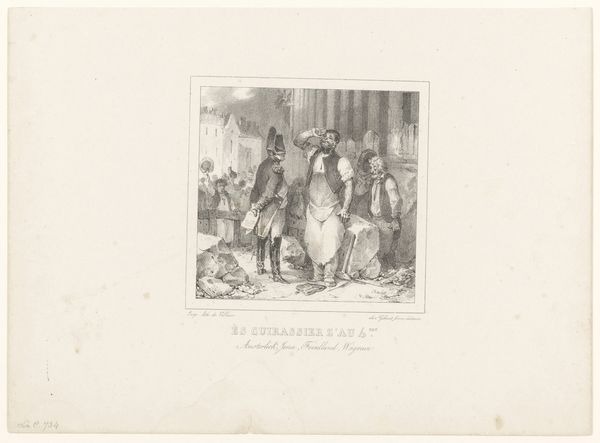
Fotoreproductie van een schilderij van Judith die het hoofd van Holofernes toont door Pietro Aldi c. 1892
0:00
0:00
print, photography, gelatin-silver-print
#
portrait
#
allegory
# print
#
photography
#
gelatin-silver-print
#
history-painting
#
academic-art
#
realism
Dimensions: height 202 mm, width 258 mm, height 298 mm, width 400 mm
Copyright: Rijks Museum: Open Domain
Editor: Here we have a photograph of Pietro Aldi’s painting "Judith Showing the Head of Holofernes," created around 1892. It’s a gelatin silver print, which gives it this incredible tonal range. The scene itself is... well, quite theatrical! What catches your eye in this powerful image? Curator: It's not just theatrical, it’s operatic. Judith holding aloft the severed head speaks volumes. Consider what that head *represents*. Beyond just Holofernes, it's a symbol of tyranny, of male aggression subdued by female guile and righteousness. This echoes throughout history – think of Salome, Medusa – woman as both savior and destroyer. What emotions do *you* feel when confronted with this image? Editor: A little disturbed, honestly. I see strength, sure, but also a kind of cold triumph. The crowd seems…awed. Do you think the artist intended for us to see Judith as a purely heroic figure? Curator: That’s the brilliance of it; the artist invites a multitude of interpretations. Is she a heroine, liberating her people? Or a traumatized woman, forever marked by violence? The answer likely shifts depending on the viewer's cultural background. The photographic reproduction here also creates a kind of doubling – a symbol *of* a symbol. We are viewing a modern interpretation *of* a historical interpretation! Editor: That's fascinating, that it becomes another layer of symbolism in itself. I definitely see this piece differently now, as a kind of commentary not just on the story of Judith but how it’s been passed down, too. Curator: Exactly. The image, repeated and reinterpreted across centuries, speaks to our evolving understanding of power, gender, and cultural memory. Food for thought!
Comments
No comments
Be the first to comment and join the conversation on the ultimate creative platform.
